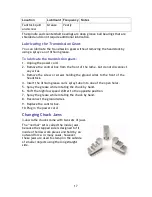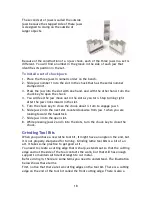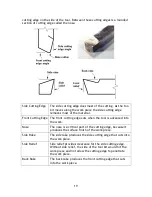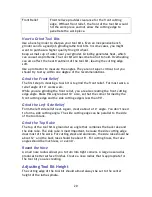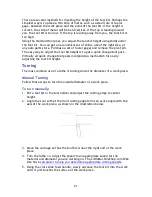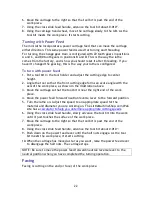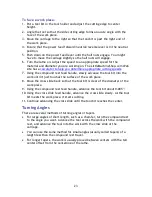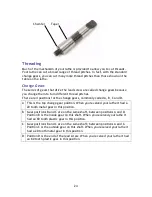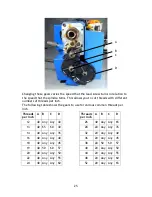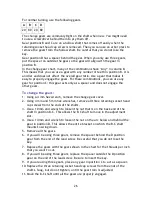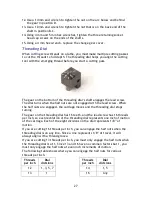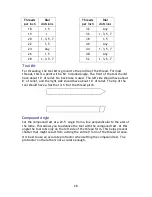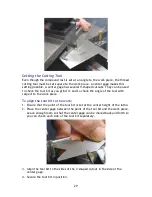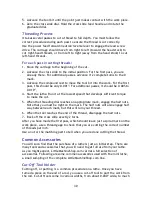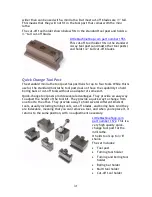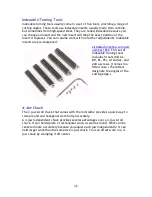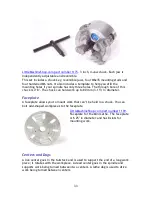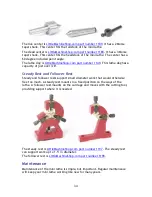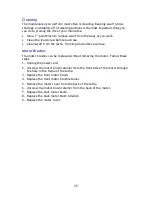
22
6.
Move the carriage to the right so that the tool bit is past the end of the
work piece.
7.
Using the cross slide feed handle, advance the tool bit about 0.010”.
8.
Using the carriage hand wheel, move the carriage slowly to the left. As the
tool bit meets the work piece, it starts cutting.
Turning with Power Feed
The mini lathe incorporates a power carriage feed that can move the carriage
either direction. This same power feed is used for turning and threading.
For turning, the change gear train is configured with 20 tooth gears in positions
A and C, and 80 tooth gears in positions B and D. This is the way the lathe
comes from the factory, and is how you should reset it after threading. If you
haven’t changed the gearing, this is the way your lathe is configured.
To turn with power feed:
1.
Put a tool bit in the tool holder and adjust the cutting edge to center
height.
2.
Angle the tool so that the front cutting edge forms an acute angle with the
axis of the work piece, as shown in the illustration above.
3.
Move the carriage so that the tool bit is near the right end of the work
piece.
4.
Move the power feed forward/neutral/reverse lever to the forward position.
5.
Turn the lathe on. Adjust the speed to an appropriate speed for the
material and diameter you are working on. The LittleMachineShop.com Web
site has a
calculator to help you determine appropriate cutting speeds
.
6.
Using the cross slide feed handle, slowly advance the tool bit into the work
until it just touches the surface of the work piece.
7.
Move the carriage to the right so that the tool bit is past the end of the
work piece.
8.
Using the cross slide feed handle, advance the tool bit about 0.010”.
9.
Push down on the power feed lever until the half nuts engage. As the tool
bit meets the work piece, it starts cutting.
10.
When the carriage has moved as far as you want, raise the power feed lever
to disengage the half nuts. The carriage stops.
NOTE: Be sure to move the power feed forward/neutral/reverse lever to the
neutral position when you have completed the turning operation.
Facing
Facing is cutting on the end (or face) of the work piece.










